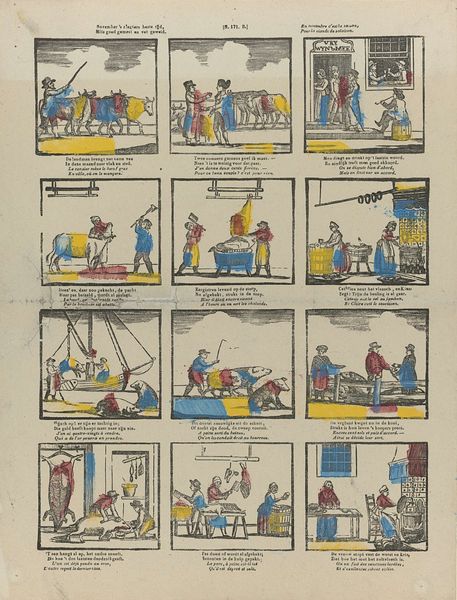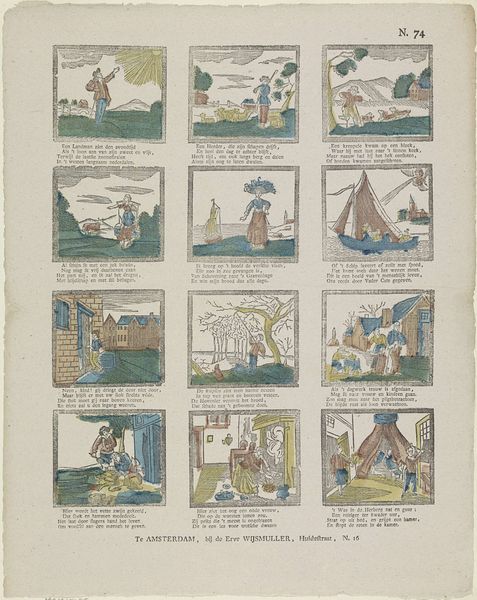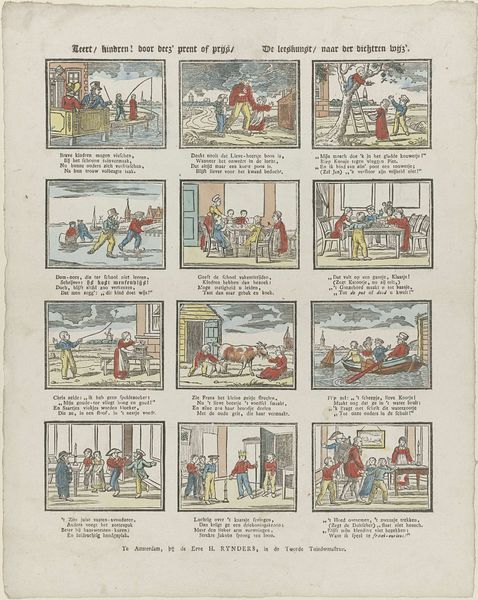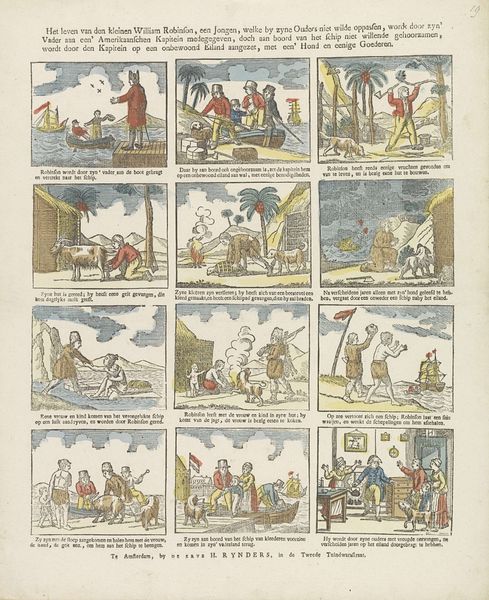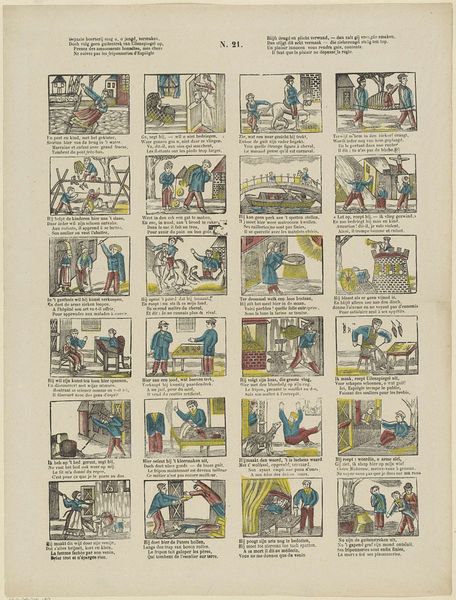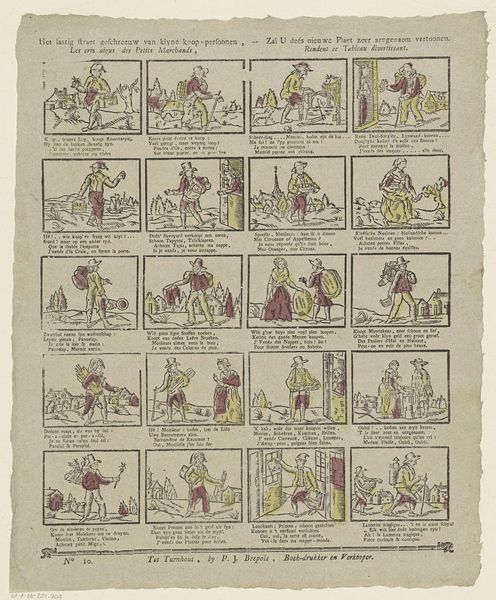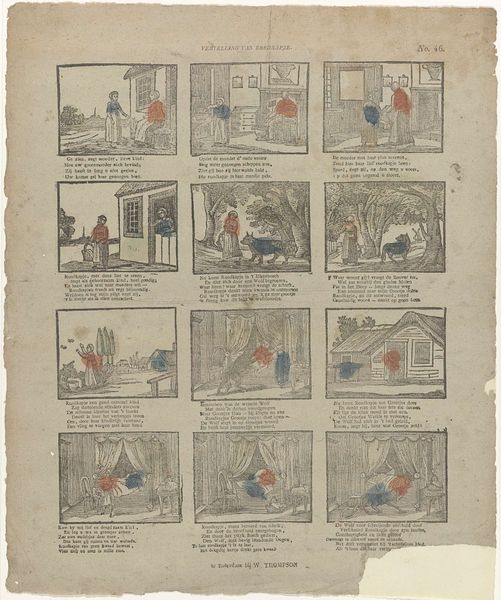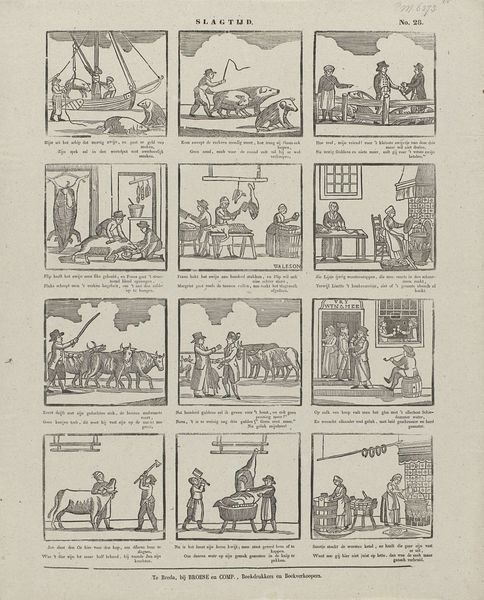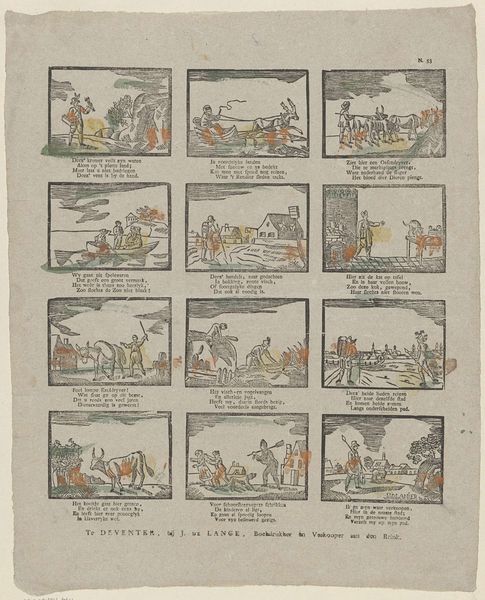
print, engraving
#
narrative-art
# print
#
figuration
#
line
#
genre-painting
#
engraving
Dimensions: height 400 mm, width 304 mm
Copyright: Rijks Museum: Open Domain
Editor: Here we have "De Slagttyd," or "Slaughter Time," a print made between 1782 and 1828 by Johannis Waleson, housed in the Rijksmuseum. It’s a series of small vignettes depicting the slaughter and butchering of animals, rendered in delicate lines and then colored. It's... unsettling, honestly. What is this print trying to communicate? Curator: It’s interesting to consider how images like this functioned in society. What sort of public role do you imagine this type of imagery had? Editor: Perhaps it's a straightforward depiction of how meat was sourced in that time. It feels a bit like an educational tool. A bit grim for children today. Curator: It *is* grim by today's standards. Think about the 18th century. Increasingly, urban centers became divorced from agricultural processes. Consider this print in that context. What statement do you think it is making by graphically detailing the ‘path’ to a plate of meat? Editor: Maybe a commentary on labor? There's a certain rhythm and system depicted, yet the physical nature of the labor involved can’t be denied. Does the inclusion of a fisherman with seals contribute to that feeling? It reminds people how the working people sourced meat then, both farmed and hunted. Curator: Precisely. These seemingly mundane genre scenes can be powerful political tools when used to draw attention to social stratification. Editor: I hadn't considered the sociopolitical aspect initially, focusing more on the direct content. Thanks, I learned a lot looking at it that way. Curator: It shows how art shapes and is shaped by cultural and historical forces. Always a balancing act.
Comments
No comments
Be the first to comment and join the conversation on the ultimate creative platform.

